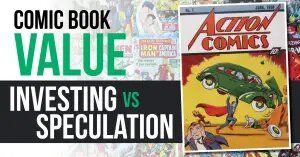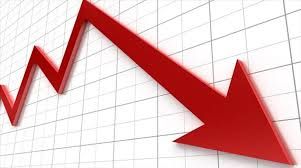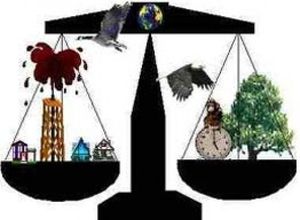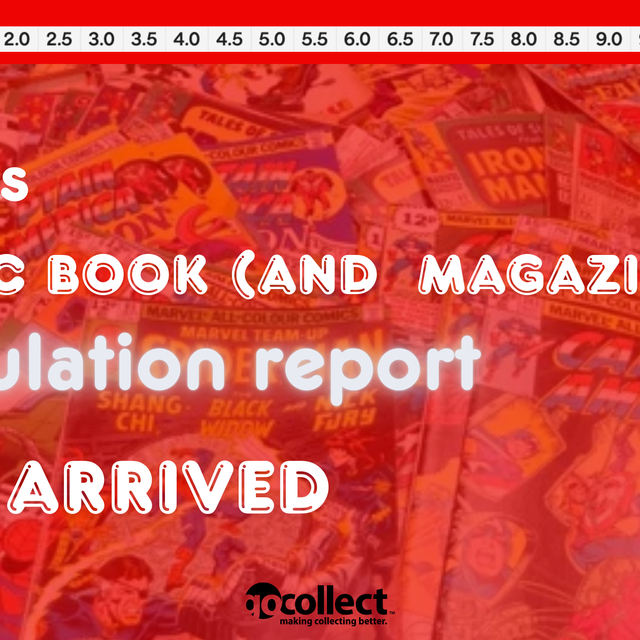
Identifying Key Elements
The Neighborhood Residents
The comic book marketplace is not a homogeneous community. Many different segments make up the market. Some may have different interests while others may be similar. However, they all deal in the buying and selling of comics, even if that is not their intent. No matter how hard they try to stay in their own lanes, there is no such thing as isolationism in the hobby.

The groups will run into each other when dealing with comics. This has caused a kind of comic book tribalism in the community where groups tend to believe their views are the correct views and others are not embracing the true emotions of the hobby. The irony is that some of their interests actually intersect and blur the lines that define each group.
The Precious
The goal of every segment of the hobby is to acquire comic books. This pursuit has changed over the years based on internal and external factors. During the 1960s and 1970s, people purchased comics as disposable reading material. Print runs were commonly in the 200 to 300 thousand copies. Comics were not preserved for the most part, either.
Now, successful runs are not even half that size, but there are also many forms of conserving these books. Understanding how the hobby has evolved has made many realize the importance of knowing who the consumers of these books are, both old and new. Identifying these groups is important because it will assist people in comprehending the motivations of those they are dealing with in the community.
The problem is that participants rarely try to fully understand those groups and how their interactions impact the comic book hobby.
The Zoo
The Readers
There is a small but dedicated group that purchases comics only to read them. That may be hard to believe, but this group is not extinct. They have been documented at conventions, comic shops, and at garage sales. These individuals see comics in their purest form and want to consume the tales that exist on their pages. Readers may purchase newer issues hot off the press or purchase older comics that may interest them.
Once read, these people then pass on those books to others. The condition of these books is not important to the reader, only that the books are read. Libraries, schools, and individuals are the beneficiaries of their literature. Readers believe that collectors and others in the community have destroyed the hobby because of the monetization of comics. Once comics were stored they became commodities.
These hoarders have caused the price of comics to exceed the budgets of teens and adults for which this medium was originally designed.
Collectors
Collectors are the librarians of the hobby. They accumulate books into large groupings with no intent of ever breaking them up. Some of these books may have arrived after they were read. Others were the targets of a very motivated hobbyist. The subject matter of their collections may differ on the personal tastes of the curator. The size of the collection is only limited by the space set aside by the collector.
These individuals take pride in their books and put in the time to organize their groupings based on the status of the books in the hierarchy of the collection. Collectors despise investors and others who cause price increases that are based only on greed.
Investors
These may or may not be collectors who sell parts of their collections based on the market value of the books. The selling of books could be the only difference that separates collectors from investors.
Investors have some attachment to the books but also realize that there exists a monetary component to the hobby. They research price variations on books and then respond accordingly. Sales may be short or long term. Investors have some passion for the hobby and thus will not leave it. They believe that comics can in fact be both loved and also dealt.
This group hates collectors because they take in books like a black hole that will never escape their grip. Investors also hate speculators because they only see dollar signs in comics. They have no affection for the books and would sell books and then leave the hobby if it was financially prudent.
Speculators
This group is not as vast in numbers as investors and collectors, but larger than readers. They view comics as true alternative investments. Speculators are investors but without the emotional attachment to the hobby or its rich history. Comics are seen only for the earning potential that exists in each book.
People like this have the resources to target most comics in the comic book spectrum. They also can deploy third-party buyers that will purchase books for them because these specialists have knowledge of the hobby that is not commonly known. Financial planners are also utilized to create a well-balanced portfolio that accounts for the risky nature of these types of investments.
Speculators are the one group that does not hate any group because they want a healthy and thriving market so that their investments are maximized to their fullest potential. They also want a larger market so that there is greater competition to maintain the value of their investments.
Homeostasis
Learning from Nature
Isle Royale is a US National Park in Michigan. Researchers have studied for years the relationship of wolves, moose, and plants in the park. The population of each group has fluctuated over the years, producing different results. When moose populations were down some plant growth exploded but it caused some species to suffer because of constraints placed on them by other plants.
The decreased moose population also put strains on the wolves because there was not enough prey for the existing predators. When it was reversed and there were more moose, all plant populations were reduced in number because of increased feedings. The moose became less selective because of the decreased food sources. The increase in the moose population was a result of a smaller population of wolves.
Wolves started to inbreed because there were fewer breeding pairs, thus further impacting their numbers. The park was only running at its best optimization when all components were in balance. This was achieved when each organism's numbers produced an ideal environment. The comic book market is not any different.
The Most Vulnerable
The decline in readers was the first domino to fall. These were younger and new readers who were novices to comics. Most of the people reading this article started out in this group. Their decline has been long coming. Free comic day and low-cost intro comics with a $.99 price tag were tried but did not have much of an impact. Even local comic book stores would maintain dollar bins with surplus inventory to attract new readers and entrants into the hobby.
As readers declined the age demographic of the hobby has increased. There were no younger readers entering the hobby that could maybe transition to long-time collectors or investors. A viable comic book market CANNOT survive if there is not a substantial influx of new, younger members. Readers were that group in the past, but now not so much.
Alphas are Needed
Speculators are despised by everyone. They are viewed as predators that come in and scoop off books that only drive up prices. This puts some books out of the reach of the collector and investor. Their disappearance from the market is a welcome sight to these groups because perceived prices drop.
The problem is that this disappearance in cash impacts publishers, LCS, and online retailers. Publishers raised prices and dropped print run numbers. Retailers started to leave the industry. Even news of high-end sales from non-hobby sites stops. A thriving market CANNOT operate if a whole segment disappears. Speculators spend cash and produce news that keeps the hobby going. Home buyers hate real estate investors, and yet they fix up properties that in the end benefit all in the neighborhood. In a closed environment, every participant plays a part.
Final Thought
Standing at the Precipice
It would be nice if one could play in a sandbox where one group makes the rules. That is not the case with comics. Many different segments exist that impact the hobby. Each of these groups serves a purpose that is essential. The endangered status of readers coupled with the exodus of speculators has started to impact the hobby.
The number of participants was not that voluminous to begin, so any migration is only going to harm the hobby. Their disappearance will also impact retailers who sell products and other things needed to participate in the hobby. The industry cannot keep going while hemorrhaging money.
Learning from the Past
Collectors may like cheaper books, but when the 90s ended many local comic book stores also closed their doors. Big box retailers that once had comic book racks to attract younger readers replaced those items with those that brought greater profits. Publishers spent less on their own product. The poor quality books that were coming to market were not what was desired by those that remained.
Collectors may not like speculators and investors but they serve a purpose. They spent money to keep the market going. Many of the profits for investors to buy books came because of rising prices caused by speculators who pumped cash into the system. Then they left.
A Lost Generation
Readers also left because prices had to be raised to make up for the lost consumption by speculators. Speculators may have been buying high-priced variants, but readers were buying traditional books and actually reading them. In addition, publishers had lines of comics that were introduced that specialized to appeal to younger generations.
Care Bears, Muppet Babies, and even the Batman cartoon show that introduced Harley Quinn to the DC Universe all were meant to bring in the next generation. When prices went up, parents could not justify paying high prices for a comic. After all, it was only a cheap group of papers with silly cartoons.
Hope Remains
The comic book market changed in the 90s and not for the good. Whole comic book market segments were decimated. The absence of one creates a domino effect and that is not good for the hobby most love. Groups may not like others because of the negative impact they have, but that does not mean they have no purpose. Moose probably do not like that wolves target them, but if not for the wolves, the moose population would starve or be prone to more diseases because of their overpopulation.
The environment can only thrive if everything is in perfect balance. Those in the hobby must realize that they all have a part to play in that sandbox because if they don't there may not be a sandbox to play in. The good news is it is not too late to realize that we can save the sandbox we love if everyone agrees to allow others to come and play in it nicely
“Progress is impossible without change, and those who cannot change their minds cannot change anything.”










